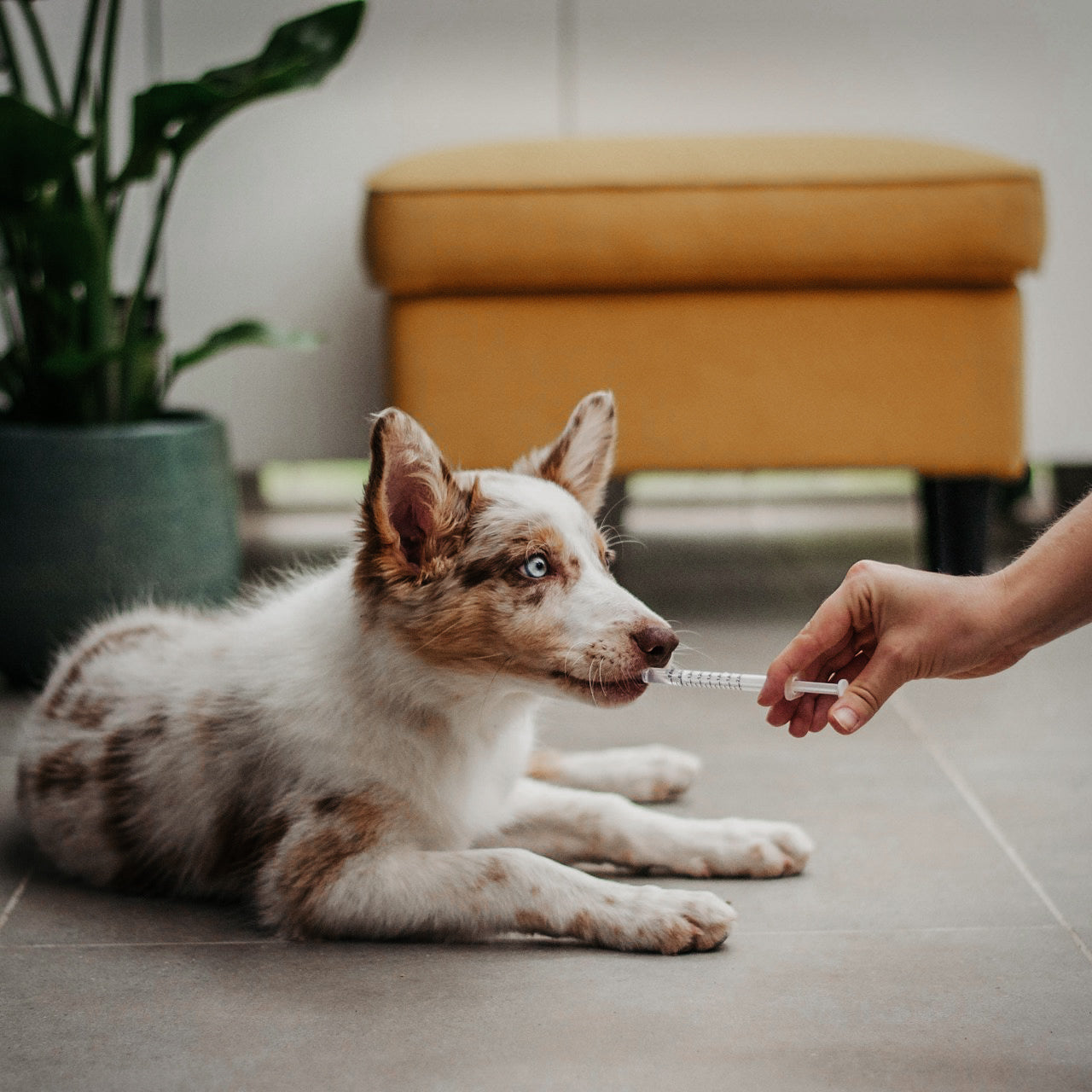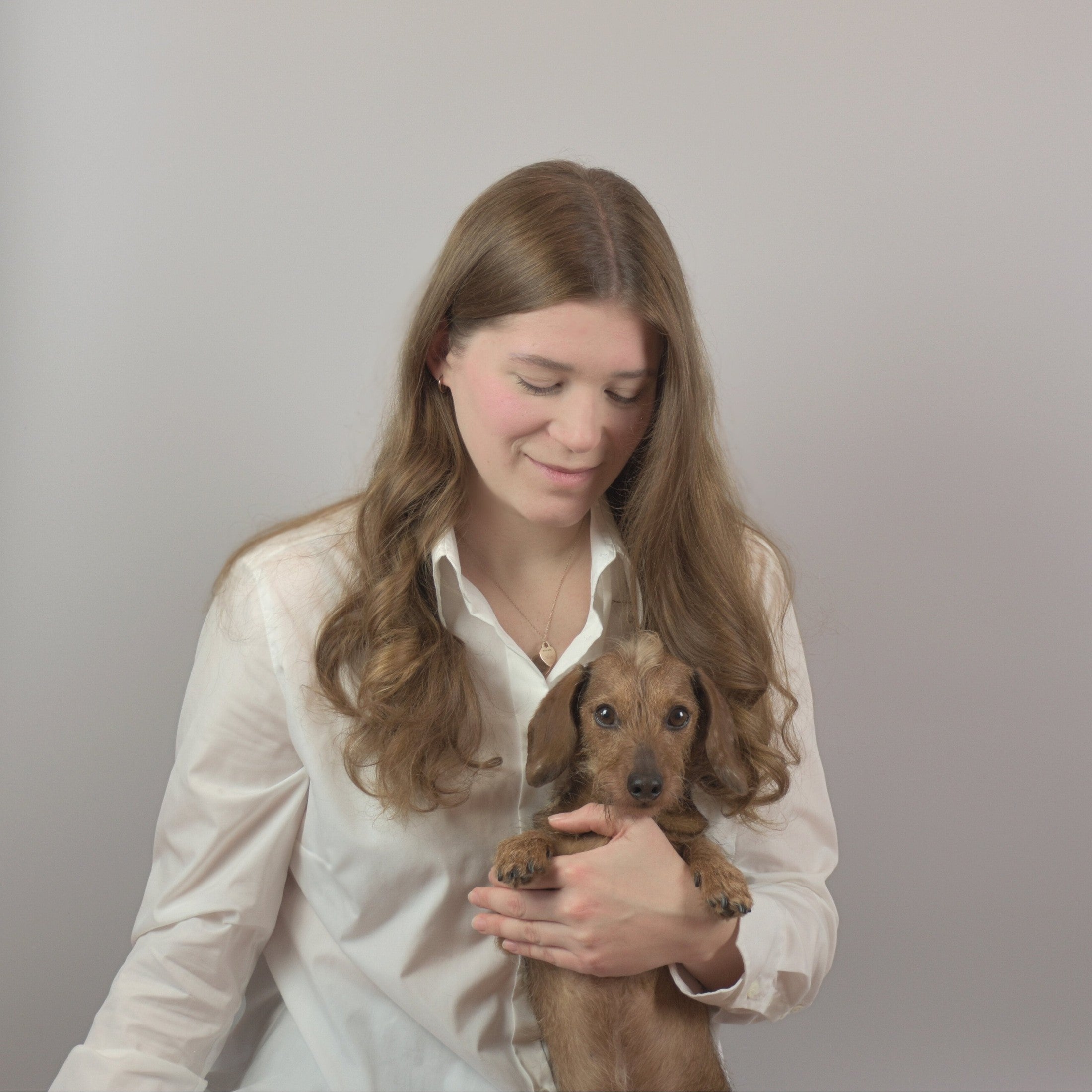A relaxing vacation with your four-legged friend requires careful preparation: How do you prevent minor mishaps, and what do you do in an emergency? A well-stocked first aid kit for your dog is your key to quick, effective first aid measures—be it for minor scratches, annoying parasites, or sudden onset of discomfort. In this blog post, you'll learn which aids are truly essential, how to use them correctly, and which additional equipment makes sense for specific vacation destinations. With this comprehensive guide, you'll be well-equipped to ensure your dog's safety and well-being, even in unfamiliar surroundings.
Table of contents
-
Why a travel clinic should always be at hand
-
The basic equipment: wound care and hygiene
-
Eye and ear care on the go
-
Symptom treatment: fever, diarrhea & nausea
-
Special equipment for special holiday destinations
-
Administer correctly: tools and techniques
-
Conclusion & further tips
Key take-aways
-
Always keep emergency contacts and documents handy.
-
Basic initial equipment includes disinfectant, bandages and tick tweezers.
-
Special care with eyewashes, thermometers and anti-diarrheal medication.
-
Destination-specific extras: insect repellent, sun protection, and paw protection.
-
When administering medication, observe the muzzle, syringes and dosage instructions.
Why a first aid kit should always be at hand
An acute emergency rarely comes at a moment's notice. Especially away from familiar surroundings, every minute of delay can worsen your dog's condition. Therefore, you should have all the important documents ready at home: the current vaccination record, as well as the contact details of your veterinarian and the nearest veterinary clinic at your vacation destination. Also, keep a clear checklist of all medications and supplies. – so you can see at a glance what might be missing. In addition to proof of insurance, which ensures coverage in an emergency, this also includes a list of emergency phone numbers. Having a copy of this "emergency kit" handy will save you hectic phone calls and long searches when it matters most.
Here are three websites where you can search for veterinary clinics (often including 24/7 emergency practices) across Europe:
-
BringFido Veterinarian Directory Europe
An interactive map and list view of dog-friendly veterinarians and clinics across Europe—often including opening hours and emergency services. BringFido
https://www.bringfido.com/resource/veterinarians/region/europe/ -
WORLDPETNET Clinic Search
Comprehensive, freely searchable directory of veterinary clinics in over 150 countries (including all EU countries). Filter by country, region, and specialty. worldpetnet.com
https://worldpetnet.com/clinics/list/en -
EBVS® – European Register of Certified Specialists
While not a traditional emergency services directory, the search function allows you to find qualified specialists (e.g., in cardiology, surgery) throughout Europe, many of whom also offer 24/7 emergency consultations. ebvs.eu
https://www.ebvs.eu/specialists
The basic equipment: wound care and hygiene
There's hardly anything more risky than a small cut that, if left untreated, becomes dirty and infected. Your first aid kit for your vacation should therefore definitely contain disinfectant and wound or healing ointment. After gently cleansing with an iodine- or alcohol-free solution, apply a thin layer of ointment to promote healing and prevent infection. A few gauze swabs and elastic bandages will help cover and cushion the affected area. Make sure to cut the dressings with rounded bandage scissors and wear disposable gloves to maintain hygiene. Tweezers should also be included in your luggage – they gently remove splinters and other foreign bodies, while tick tweezers are essential for safely removing parasites.
| utensil | Purpose | Notes |
|---|---|---|
| Disinfectant | Cleaning cuts and abrasions | Iodine or alcohol-based |
| Wound ointment / healing ointment | Support wound healing | Bee or marigold based |
| Gauze swabs, gauze bandages | Covering and padding wounds | Disposable items |
| Elastic bandages, tape | Fixation of bandages and padding | Suitable for joint supports |
| Bandage scissors | Cutting dressing material | Rounded tip for safety |
| Disposable gloves | Hygiene in wound care | Latex or nitrile gloves |
| tweezers | Removing foreign bodies such as splinters | Rounded to prevent injuries |
| Tick tweezers | Safe removal of ticks |
Elongated, tight fitting |
Application tips:
-
First, carefully clean the wound with disinfectant.
-
Apply a thin layer of wound ointment.
-
Pad and secure the wound with gauze swabs and an elastic bandage.
-
Use gloves to work hygienically and avoid infections.
Eye and ear care on the go
Irritations caused by sand, dust, or pollen can occur more quickly than you think, especially if your dog enjoys romping by the water or sniffing around in the woods. A sterile saline solution gently flushes foreign matter from the eye without irritating the sensitive tissue. Special eyewash solutions, enriched with soothing additives, relieve redness and inflammation. The same applies to the ears: A mild cleansing agent removes dirt and excess secretions, thus preventing inflammation. Use soft compresses to dab the area, avoiding pressure and excessive amounts of fluid. If swelling or persistent discomfort occurs, consult a veterinarian immediately.
Symptom treatment: fever, diarrhea & nausea
Fever is often the first sign that something is wrong in dogs. A digital thermometer, gently applied rectally, will reliably indicate body temperature. Between 38°C and 39°C, your dog is considered within the normal range. If the temperature rises above this, quick action is required. For diarrhea, activated charcoal or healing clay can bind excess toxins, while a mild electrolyte solution replaces lost minerals. Initially, let your dog drink only water for up to twelve hours before starting an easily digestible diet of rice and lean chicken. Travel sickness can be relieved with special preparations, such as dimenhydrinate – but always after consulting a veterinarian. Gentle Bach flower remedies or homeopathic globules can help reduce stress, and familiar surroundings with favorite toys provide additional calm.
Measure fever
-
Digital thermometer : The normal rectal temperature of dogs is between 38 °C and 39 °C.
-
Application : Thoroughly clean the thermometer, lubricate it, and carefully insert it into the anus. Read the reading after approximately 60 seconds.
Diarrhea
-
Acute remedies : Activated charcoal, healing clay or dietary food to bind toxins.
-
Electrolyte solution : To compensate for lost fluids and minerals.
-
Feeding break : Up to 12 hours (offer only water), then start with easily digestible bland food (rice with chicken).
Nausea & Stress
-
Travel sickness : Special preparations (e.g. dimenhydrinate) after consultation with the veterinarian.
-
Sedatives : Bach flowers or homeopathic globules can have a gentle effect.
-
Distraction : Favorite toys and quiet surroundings help reduce stress.
Special equipment for special holiday destinations
The risks for your dog vary depending on your destination. In Mediterranean regions, for example, the danger from sand flies, carriers of leishmaniasis, is higher. An insect repellent collar or spot-on treatment provides protection. In very sunny areas, dogs with light fur or exposed skin require special sunscreen fluid – similar to that used for humans, but dermatologically developed for dogs. Hot road surfaces or sharp-edged surfaces require paw boots to protect your four-legged friends from burns or injuries. A regenerating paw ointment supports healing after long days at the beach or in the forest, and absorbent towels make it easier to dry off quickly after trips to the sea.
Depending on the region and activity, you may need additional equipment:
-
Insect protection
– Collars with repellents against mosquitoes and sand flies (leishmaniasis regions)
– Spot-on products for protection against ticks and fleas -
Sun protection
– Sunscreen fluid for dog skin (especially for light or short-haired dogs)
– Sunglasses or shades for sensitive eyes -
Paw protection
– Paw shoes for hot floors or sharp-edged surfaces
– Paw ointment with regenerating ingredients
– Absorbent beach towels for drying paws after a trip to the sea
With this equipment, your dog is well protected from the typical dangers at your holiday destination.
Administer correctly: tools and techniques
Often, it's not just the medication you use that matters, but also how you administer it. Plastic syringes without a needle are ideal for administering liquid medication into the mouth in a controlled and measured manner. Press slowly and in small increments to prevent choking. Wooden tongue depressors are used to apply ointments to the throat without triggering a gagging reflex. In painful situations or with anxious dogs, you can use a muzzle to protect everyone involved – practice using it at home so your dog doesn't experience additional stress. Always store medication in a cool, dark place, and check the expiration date of your medications before every trip to avoid bringing back ineffective medications.
Conclusion & further tips
A complete, well-thought-out first-aid kit will keep you and your dog safe while on vacation. Keep an eye on your checklist, regularly update contents and expiration dates, and practice using muzzles, thermometers, and other items beforehand. Research emergency services and veterinary clinics at your vacation destination in advance and, if possible, purchase medications from reputable pharmacies.
-
Checklist : All utensils and medications
-
Emergency numbers : veterinarian, veterinary clinic, insurance
-
First aid kit : well-stocked and refrigerated
Further tips:
-
Find out about emergency services at your holiday destination in advance.
-
If possible, buy medicines in pharmacies, not at rest stops.
-
Practice using a muzzle and thermometer before traveling.
With these preparations, nothing stands in the way of a stress-free adventure with your dog. Have a safe trip and a wonderful time together!






